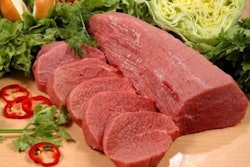The objectives of this research were to quantify gastrointestinal tolerance, total tract nutrient digestibility and serum lipid profiles of dogs as affected by α-cyclodextrin (ACD) supplementation and to validate the accuracy of fat analyses techniques using novel ACD–fat complexes.
Nine mixed-breed hounds were used in a crossover design with three periods of 10 days each, including six days for diet adaptation and four days for fecal collection. Dogs were fed twice daily a diet with poultry byproduct meal and brewer’s rice as the main ingredients, and chromic oxide (0.2%) was included as a digestion marker. Dogs were supplemented with either 0, 3 or 6 grams of ACD diluted in 15 mL of water twice per day for a total of 0, 6 and 12 grams ACD per day. Average daily food intake, fecal output and fecal scores were not significantly different among treatments. Body weight and condition score and serum triglycerides and cholesterol concentrations remained unaltered throughout the duration of the experiment. Dry matter, OM and fat digestibility coefficients were lower for both treatment groups compared to the control.
Intake of ACD lowered fat digestibility somewhat but not to the extent previously reported, without affecting serum lipid concentrations or outcomes related to tolerance. Therefore, ACD supplementation resulted in a small decrease in fat digestibility, but ACD supplementation might have potential in modifying serum lipid profiles.
Source: M.A. Guevara et al., 2015. Serum lipid profiles, total tract nutrient digestibility and gastrointestinal tolerance by dogs of α-cyclodextrin. J Anim Sci online, May 2015. doi: 10.2527/jas.2014-8442.
















